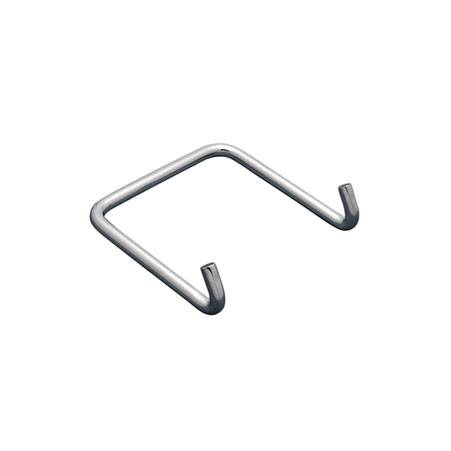Stainless steel U anchors are a critical component in industries that demand durability, high performance, and long?term reliability. With multiple grades, designs, and customization options, they provide optimal support for refractory linings, insulation systems, and structural applications across sectors.
Stainless Steel U Anchors play an important role in modern industrial applications where durability, structural integrity, and resistance to extreme operating conditions are essential. These U?shaped anchoring components are specially designed to provide secure and reliable fixing for refractory linings, insulation systems, and other high?temperature structures. Industries such as petrochemical plants, power generation facilities, cement kilns, and steel production units depend heavily on stainless steel U anchors for consistent performance under harsh environments.
Overview of Stainless Steel U Anchors
U Anchors are precisely engineered to hold refractory bricks, castables, or ceramic fiber linings firmly in place. Their U?shaped design distributes load evenly, minimizing stress and enhancing the overall lifespan of the structure. SS U anchors are particularly popular because stainless steel offers excellent corrosion resistance, superior tensile strength, and resistance to oxidation even at elevated temperatures.
Manufacturers design these anchors to suit various fixing requirements, providing different lengths, leg angles, and diameters. Customization ensures compatibility with diverse installation methods, including welding, bolting, or casting into concrete.
Why Choose Stainless Steel for U Anchors?
The choice of material is crucial in ensuring longevity and effectiveness. Stainless steel U anchors outperform traditional carbon steel due to their unique properties:
- Corrosion resistance: SS grades protect against rust and chemical attacks.
- High?temperature strength: Ideal for furnaces, boilers, and incinerators.
- Low maintenance: Reduced need for frequent replacements.
- Compatibility with refractory linings: Maintains structural integrity even in fluctuating thermal conditions.
Material Grades for Stainless Steel U Anchors
Stainless steel U anchors are available in multiple grades, each designed to meet specific operational demands:
- SS 304 and 304L: Widely used for their balance of strength, corrosion resistance, and cost?effectiveness.
- SS 316 and 316L: Preferred in marine and chemical environments due to superior resistance to chlorides and acids.
- SS 310 and 310S: Known for exceptional oxidation resistance at high temperatures, making them ideal for furnaces and kilns.
- SS 321: Stabilized with titanium to resist carbide precipitation, suitable for high?temperature applications.
- SS 347: Offers improved resistance in strongly oxidizing environments.
- SS 409 and 410: Economical options with good oxidation and heat resistance.
Heat?resistant alloys: Special grades like Inconel and other nickel?based alloys are also available for extreme service conditions.
Applications of Stainless Steel U Anchors
- U type anchors are indispensable in several industries:
- Refractory linings: Cement plants, petrochemical units, and power plants use U anchors to secure refractory castables and ceramic linings.
- Industrial furnaces: Provide strong support for linings in boilers, kilns, and incinerators.
- Petrochemical & chemical industries: Offer resistance against aggressive chemicals and high?temperature gases.
- Construction & infrastructure: Used in retaining walls, thermal insulation systems, and expansion joints.
- Shipbuilding & offshore structures: Corrosion resistance makes them suitable for marine environments.
Design Variations of U Anchors
Stainless steel U anchors come in a variety of designs to meet different installation needs:
- Standard U anchors: General?purpose anchors for most refractory lining applications.
- V?shaped and Y?shaped anchors: Offer additional stability in certain refractory configurations.
- Custom?fabricated U anchors: Tailored designs based on project specifications, including leg length, bend angle, and diameter.
- Welded and threaded types: For secure fixing on metal surfaces or concrete structures.
